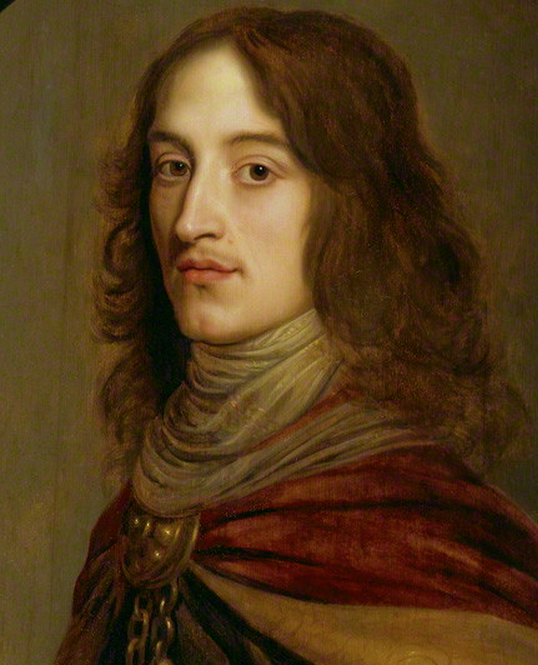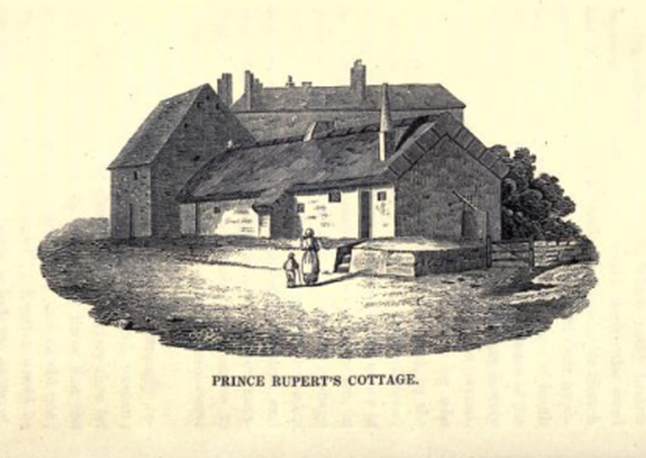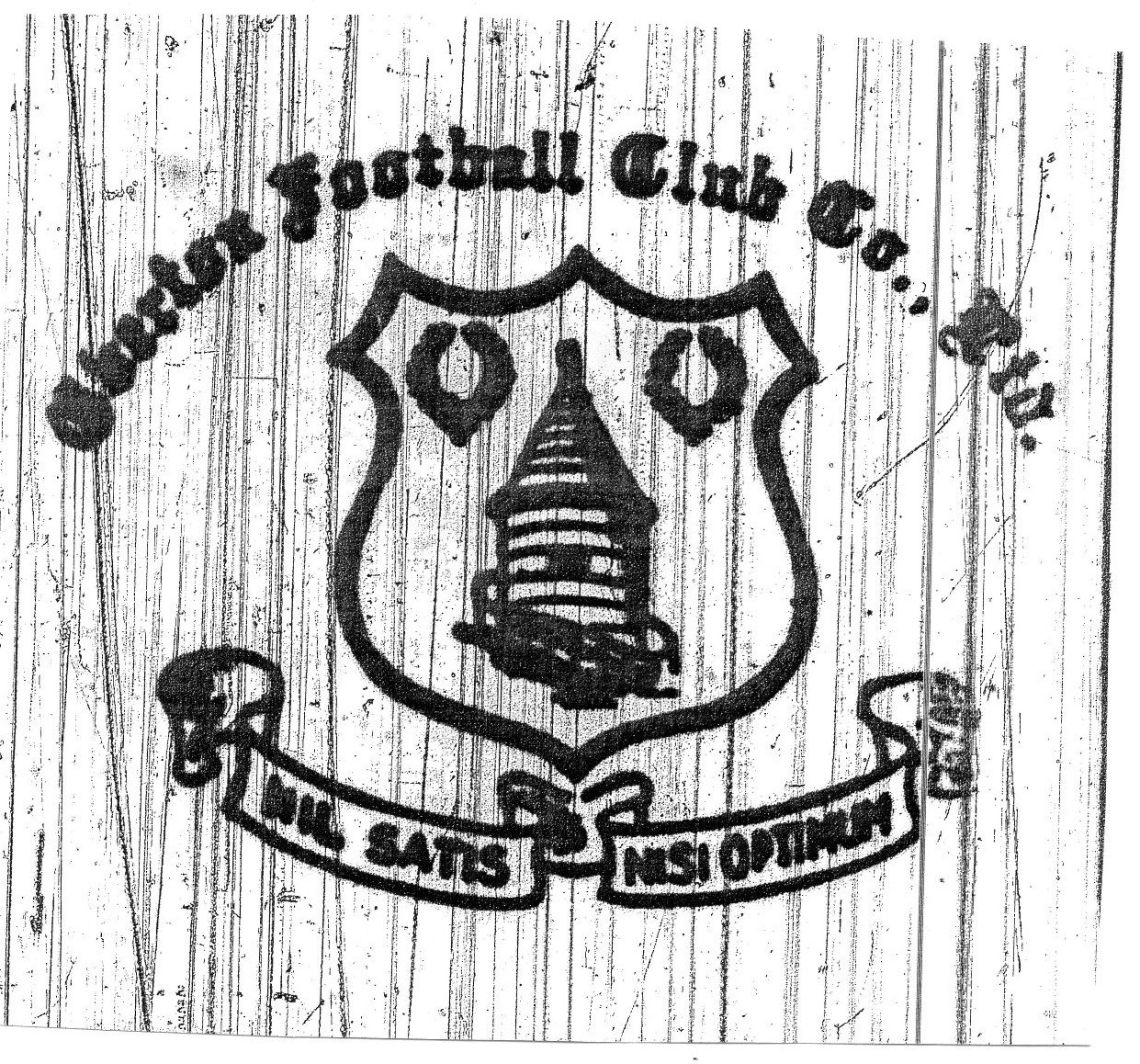Prince Rupert’s Tower is known for being the centrepiece of Everton’s crest. It has been on the crest in 1938 and from 1978 onwards. But what exactly is it?
Introduction
Prince Rupert’s Tower (also known as Everton Lock-Up) was built in 1787 on Everton Brow. It was originally used to hold minor criminals and drunks overnight, who would then be brought to the magistrates. The resulting punishments would have been either something similar to community service or even something as drastic as a death sentence.
Early days
In 1830, Robert Syers wrote a book called “The History of Everton” and wrote this about Prince Rupert’s Tower:
On the south, or in the front of these last-named dwellings, and separated from them by an ancient foot-path over the brow, lies a triangular-shaped patch of land, bounded on all sides by the public roads; this is locality 61, a, the property of the township. This spot of ground has been frequently enclosed with strong wood rails, at the township’s expense, but mischief, malice, or wantonness have constantly destroyed them; it has been lately determined, however, to have this lot surrounded with a strong, but low stone wall, surmounted handsome iron railings, within which the whole lot is now enclosed, and the interior is in the course of preparation for the reception of shrubs and pleasure-ground decorations; so that these things, together with the tasty manner in which the stone-jug or bridewell, which stands in the centre, has been lately embellished, greatly ornament this part of the township.
Syers, however, criticised the Tower and demanded it should be demolished:
The bridewell is a mere stone-jug or watch-box, a diminutive building, and, as regards its interior, a dark, damp strong-hold, for the temporary reception and incarceration of the unruly, the vicious, and the criminal, that is, until a magistrate’s committal consigns such unfortunate human beings to a more fit and congenial place of confinement. This apology for a bridewell ought to be taken down—it is a discredit to the community, whose good taste and liberal views, in most cases, lead them to do what is proper and needful; a trifle assessed on the annual value of each one’s property would serve to erect, on a small scale, a suit of buildings on this eligible spot. The place would be highly convenient for the purpose; and the buildings ought to be sufficiently spacious for Everton’s parochial and constabulary affairs to be conducted therein. But it would only cost what might be termed a bagatelle, so far as regards the wealthy settlers and land-owners of Everton, were they to erect a handsome and spacious suit of buildings, which should comprise a set of offices for the high-constable and tax-collector; a secure, convenient, and decent jail or bridewell; and a good sized apartment, capable of containing the inhabitants of the township, whenever they might be convened together to deliberate on public affairs.
He didn’t stop his hatred for the Tower there:
In the year 1787 a stone-jug or bridewell was built on the triangular patch of land lately walled and railed in, at the upper part of Everton-brow: such an erection might have suited the temper and the exigencies of the times in which it was erected; but how does it suit the temper and the exigencies of these enlightened times? To reply, would be to reflect on the intellectual attainments of the present inhabitants of Everton.
Surely this apology for a stronghold will be razed to the ground, and its site occupied with something more becoming and useful—and what would be the expense? so little, indeed, that it would be scarcely felt, comparatively speaking, by such a wealthy and respectable community as that of Everton; whilst the advantages to be attained would be great and many.
He also mentioned that the Tower was not Evertonian, but actually an idea created by people from nearby Kirkdale, who decided the tower should be built in Everton, which the Evertonians allowed:
Singular as it may seem, it is nevertheless a fact, that the township of Kirkdale has established its bridewell in this quarry, and actually within the township of Everton. Why the Kirkdaleites have thrust this necessary evil into Everton’s bosom, or why the Evertonians permit it to remain in their territory, is scarcely worthy of further inquiry or notice, excepting that, according to general custom and usage, Messrs. of the Kirkdale municipality, ought to direct all rogues and vagabonds, caught at large within the limits of their jurisdiction, to be incarcerated in some stronghold within the bounds of their own township.
Syers also mentioned a robbery that took place 18 years before the book was written where the criminals were eventually incarcerated in Prince Rupert’s Tower:
In Everton-lane, […] a severe conflict took place, in the year 1812, between a body of the police of Liverpool, and a band of robbers. Those marauders had frequently stopped and robbed the passengers in various hackney-coaches which occasionally plied on the outskirts of Liverpool; at length the police of Liverpool resorted to stratagem, with a view of capturing and punishing this daring gang of banditti. The police-men, being well armed, placed themselves in a hackney-coach, soon after it was dark, and proceeded leisurely over Edge-hill; and when they arrived at the point before-named they were assaulted by the robbers, who lay in ambush at the west end of Mill-lane: a desperate conflict ensued with fire-arms and sharp weapons, but, strange to state! no live were lost. The robbers were at last discomfited, some of them were secured, but a few fled and escaped, taking their course over Mr. Plumpton’s field, in which some of their cast-away fire-arms were found the next morning. The experiment succeeded, for since then hackney-coaches have been safely permitted to ply this district.
One of the police-men, of bulky size, was jeeringly likened by his fellows to Falstaff, for, like the fat knight, he foundered on the field of battle, and was picked up when the fray was over, to join in boasting of the prowess exhibited by the victorious party. Those of the robbers who were taken were tried, and three of them were found guilty, and executed at Lancaster, in April, 1813.
Who was Prince Rupert?

- Prince Rupert’s full name was Rupert, Count Palatine of the Rhine, Duke of Bavaria, Duke of Cumberland, Earl of Holderness.
- He was born in Bohemia (now Czech Republic) on December 17th, 1619.
- He was the grandson of James I of England, the nephew of Charles I, the cousin of Charles II and James II, and the uncle of George I.
- His father briefly ruled Bohemia, but had to flee when Prince Rupert was a baby to the Netherlands.
- He fought in the Thirty Years’ War and joined Charles I’s army in the English Civil War.
- He led the Royalist cavalry and fought in the first major battle of the Civil War – the Battle of Edgehill.
- After losing to the parliamentarians at Marston Moor, he lost York and the north of England. He then lost in the Battle of Naseby as well.
- Because of the defeats, Rupert advised his uncle to make peace and call a truce with Parliament, but Charles I refused to give up.
- In September 1644, he surrendered Bristol to Parliament. His uncle was not pleased and Rupert left England for exile in the Netherlands.
- Rupert went into hiding again in the 1650s in the West Indies and Germany after losing a naval battle.
- Once the monarchy was restored in 1660, Rupert fought in the Second and Third Anglo-Dutch Wars.
- He died on November 29th, 1682 after suffering from pleurisy, and is buried in Westminster Abbey.
What does Prince Rupert have to do with the Tower?
It is said to be named after Prince Rupert because his army stayed in the Everton area before attacking parliamentarians who were holding Liverpool Castle, which was located at the site which is now the Liverpool ONE shopping centre. Prince Rupert stayed in a cottage on Everton Brow, looked at the castle and did not take a shine to it, saying:
It is a crow’s nest that any part of schoolboys could take!
The attack resulted in a week of fighting and 1,500 deaths in Prince Rupert’s army.

Why is the Tower on the crest?
When Everton secretary Theo Kelly was asked to design a crest for Everton in 1938, he struggled to think of what the crest to include, but then he had a brainwave.
I was puzzling over it for four months. Then I thought of a reproduction of the “Beacon”, which stands in the heart of Everton.
As he thought the Tower was an important part of the Everton area, he felt it is deserving of a place on the crest.
